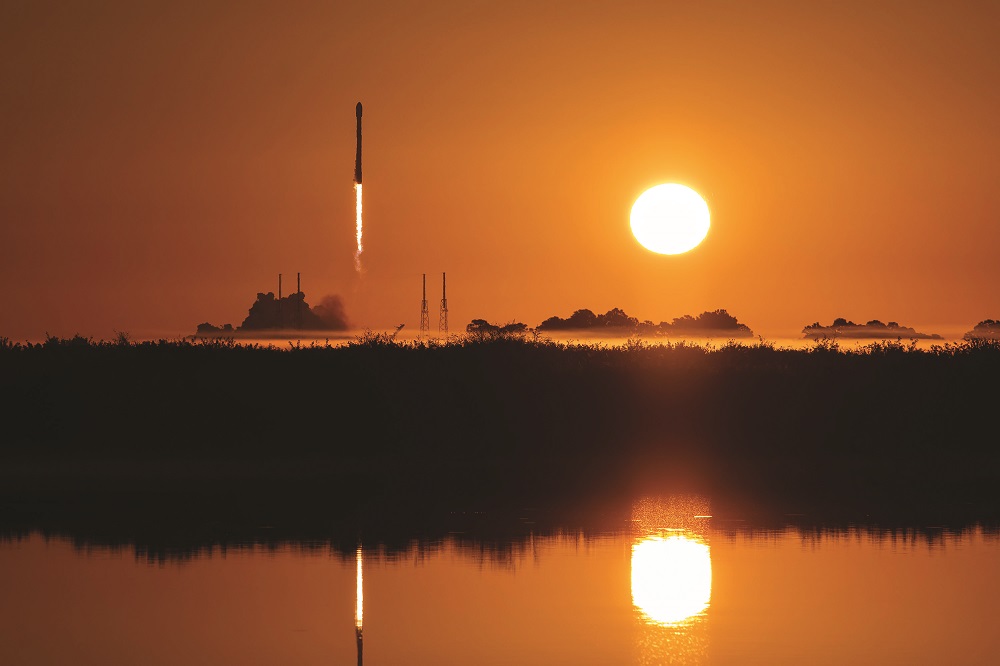WASHINGTON — The U.S. Space Force last week announced plans to increase the number of providers in the national security launch program. Officials said July 19 the decision was driven by a projected growth in demand for satellite launches and concerns about a shortage of heavy-lift rockets later this decade.
“The manifest is growing. So in Phase 3 we’re refining our strategy,” said Col. Douglas Pentecost, deputy program executive officer of assured access to space at the Space Systems Command.
During a call with reporters, Pentecost said the next procurement of launch services, known as National Security Space Launch Phase 3, is intended to ensure the Space Force has access to launch supply at competitive pricing.
Under the dual-lane NSSL strategy, the plan is to select multiple medium-lift rockets to launch lower-orbit missions, and three heavy-lift launch providers in an effort to reduce DoD’s dependence on SpaceX and United Launch Alliance.
Pentecost said the Space Force estimates it could launch as many as 88 missions in the 2027-2032 timeframe.
“We looked at the market, we looked at the capacity,” he said. “We made the determination that in order to really ensure access to space, that adding a third provider into what we’re calling Lane 2 is what was good for the nation.”
NSSL Phase 3 has a Lane 1 procurement aimed at smaller launchers that fly to lower orbits. Lane 2 requires heavy-lift launchers that can fly payloads to nine “reference orbits” that include some of the most demanding DoD and intelligence agency missions.
During the NSSL Phase 3 contract period there will be growing commercial demand for launch, fueled by mega-constellations like Amazon’s Project Kuiper, Pentecost said. Another concern is what’s been happening in the small launch sector when companies that one day are “burning bright then declare bankruptcy,” he said. “You never know.”
The Phase 3 strategy is designed to “basically guarantee capacity” for national security launch and to secure competitive prices, he said. “We’re trying to lock down 80 to 90 missions that we’re looking to launch over the timeframe.”
Third provider will get seven missions
About 30 missions will be awarded under Lane 1, and 58 in Lane 2, said Pentecost.
Of the 58 missions in Lane 2, seven — five GPS satellite launches to medium Earth orbit and two direct-to-geostationary orbit launches — are being set aside for a third provider.
The highest scoring competitor in Lane 2 will get 60% of the other 51 missions, and the second-best score will get 40%.
All three Lane 2 winners will be eligible for up to $100 million a year in funding to pay for military-unique requirements, such as having both East and West Coast launch sites, vertical integration facilities and giving the Space Force access to their commercial launch data.
The Space Force initially planned to award five-year contracts to two Lane 2 providers but later realized it needed to support a third provider for national security and economic reasons.
“We want to get the best pricing,” Pentecost said. “We didn’t want to necessarily pay for a third guy” but decided that by limiting the third provider to those specific seven missions, the Space Force could curtail the cost of the integration studies required for NSSL launch providers.
Increased national security demand
When the Space Force in February released its first draft solicitation for NSSL Phase 3 it was forecasting just 39 missions for Lane 2.
Pentecost said the Space Force revised the forecast to 58 after further discussions with military space program offices and the National Reconnaissance Office.
“We’re looking at what we think the future is going to look like,” he said. “We worked with the NRO on their future missions that are being developed and talked to other space vehicle program offices to understand what the next five years are going to look like.”
The Space Systems Command plans to release a final request for bids in September and proposals will be due by year’s end. Contracts for single-missions under Lane 1 and five-year contracts for Lane 2 would be awarded in October 2024.
New rockets in development
Companies seeking to challenge current NSSL providers SpaceX and United Launch Alliance do not necessarily have to have operational rockets by the time contracts are awarded in 2024.
Pentecost said a launch company with a new rocket in development can still be selected if it submits a credible plan showing its vehicle will be ready to fly by October 2026, Pentecost said. That is the start of fiscal year 2027 when Phase 3 missions have to be ordered.
If any of the selected launch companies are not able to fly by that date, the missions will be reassigned to one of the other Lane 2 providers.
A new entrant like Blue Origin, for example, could be awarded a Lane 2 contract on the assumption that its New Glenn rocket will be operational and certified by October 2026. If the vehicle is not ready, the Space Force will assign fiscal year 2027 missions to the other two providers until Blue Origin’s vehicle is certified. Missions will be assigned every year in October during the five-year contract.
